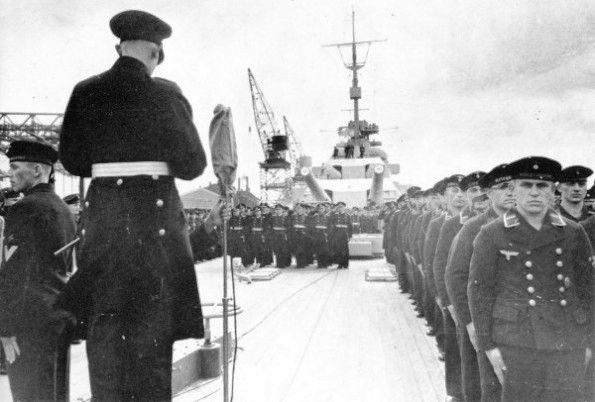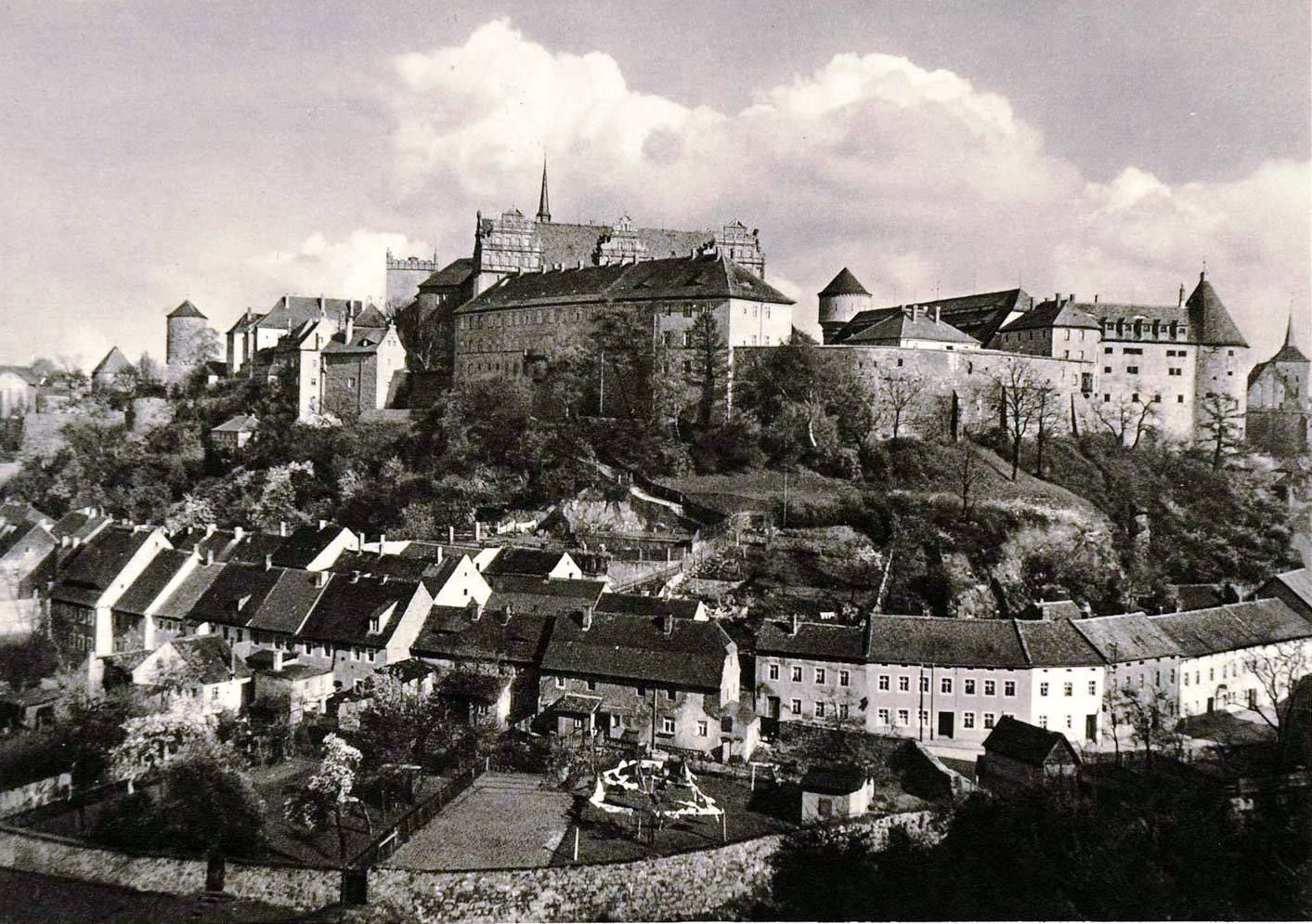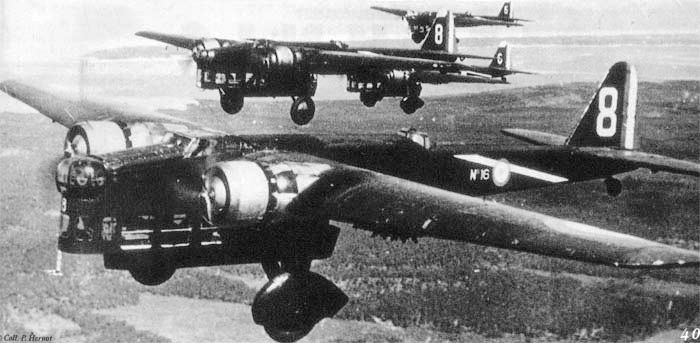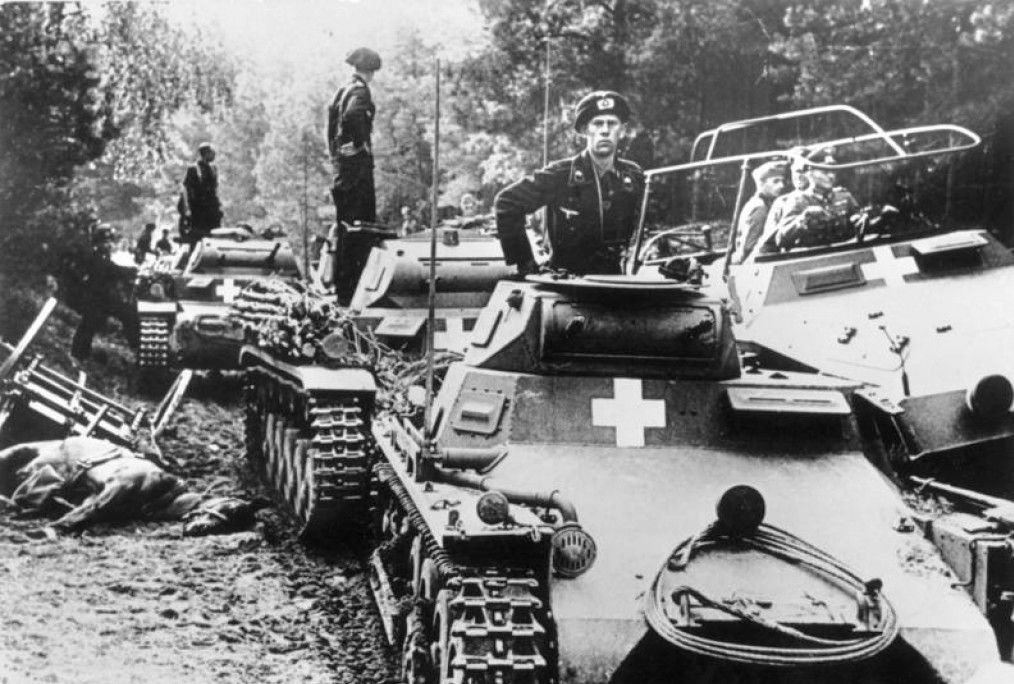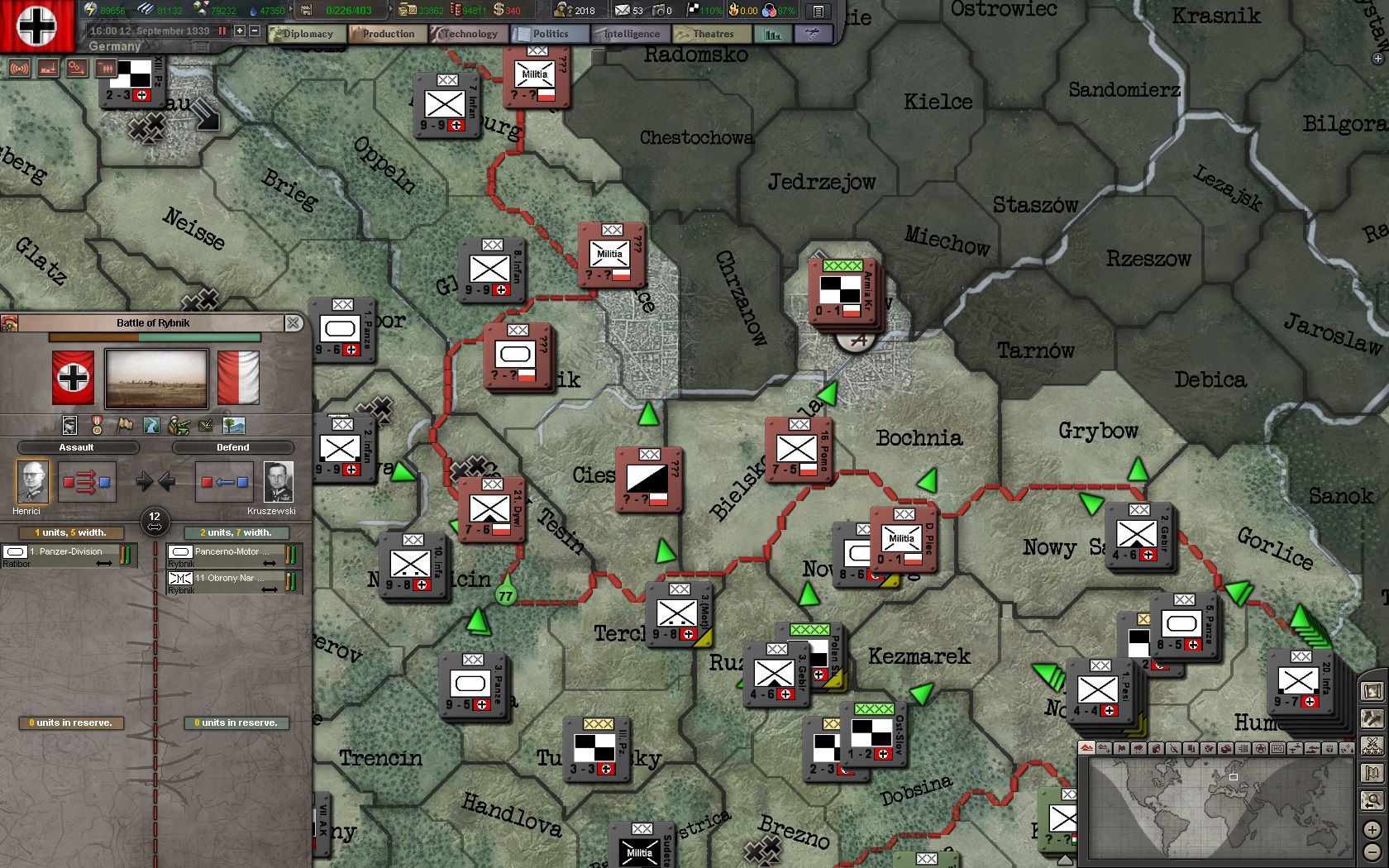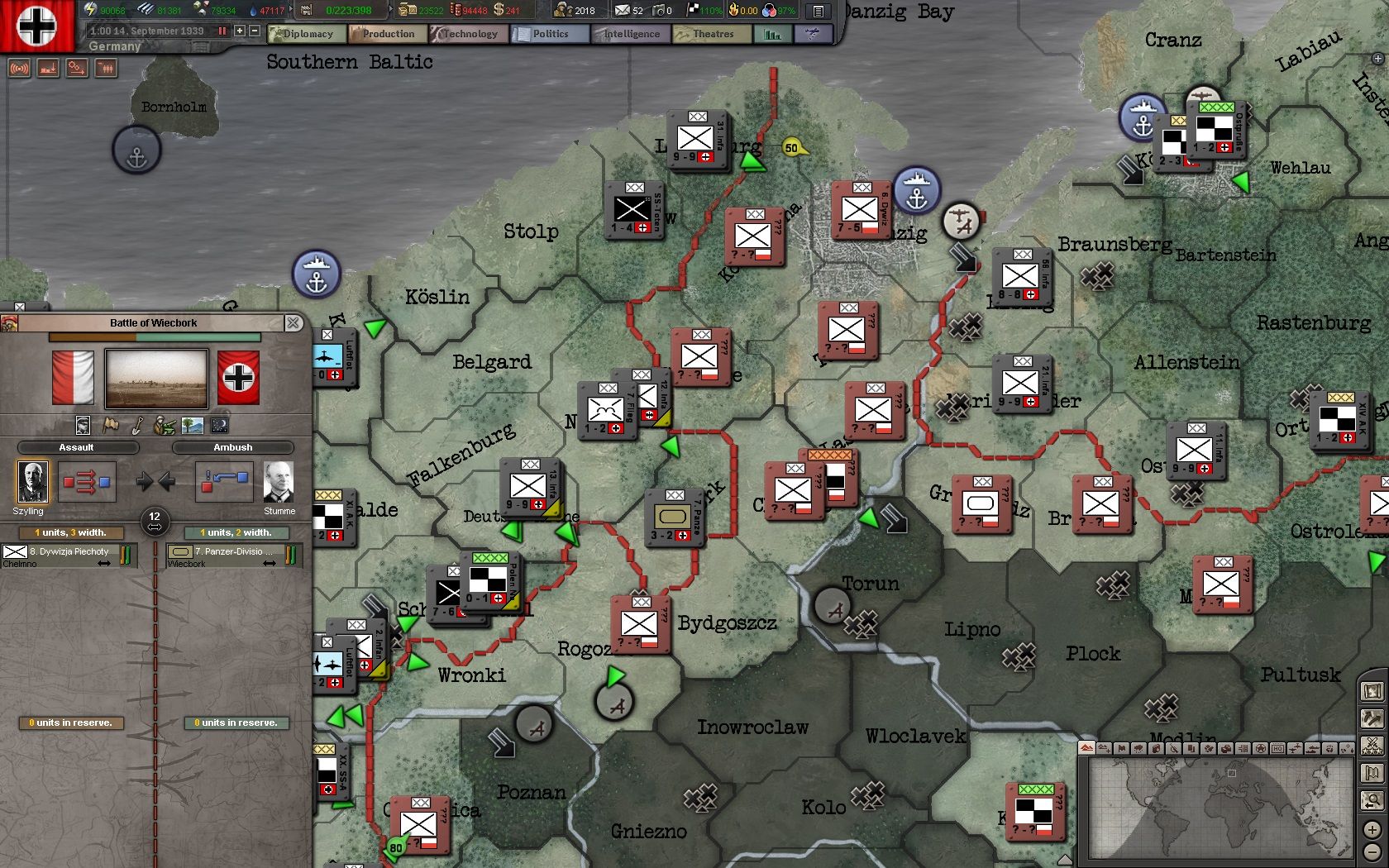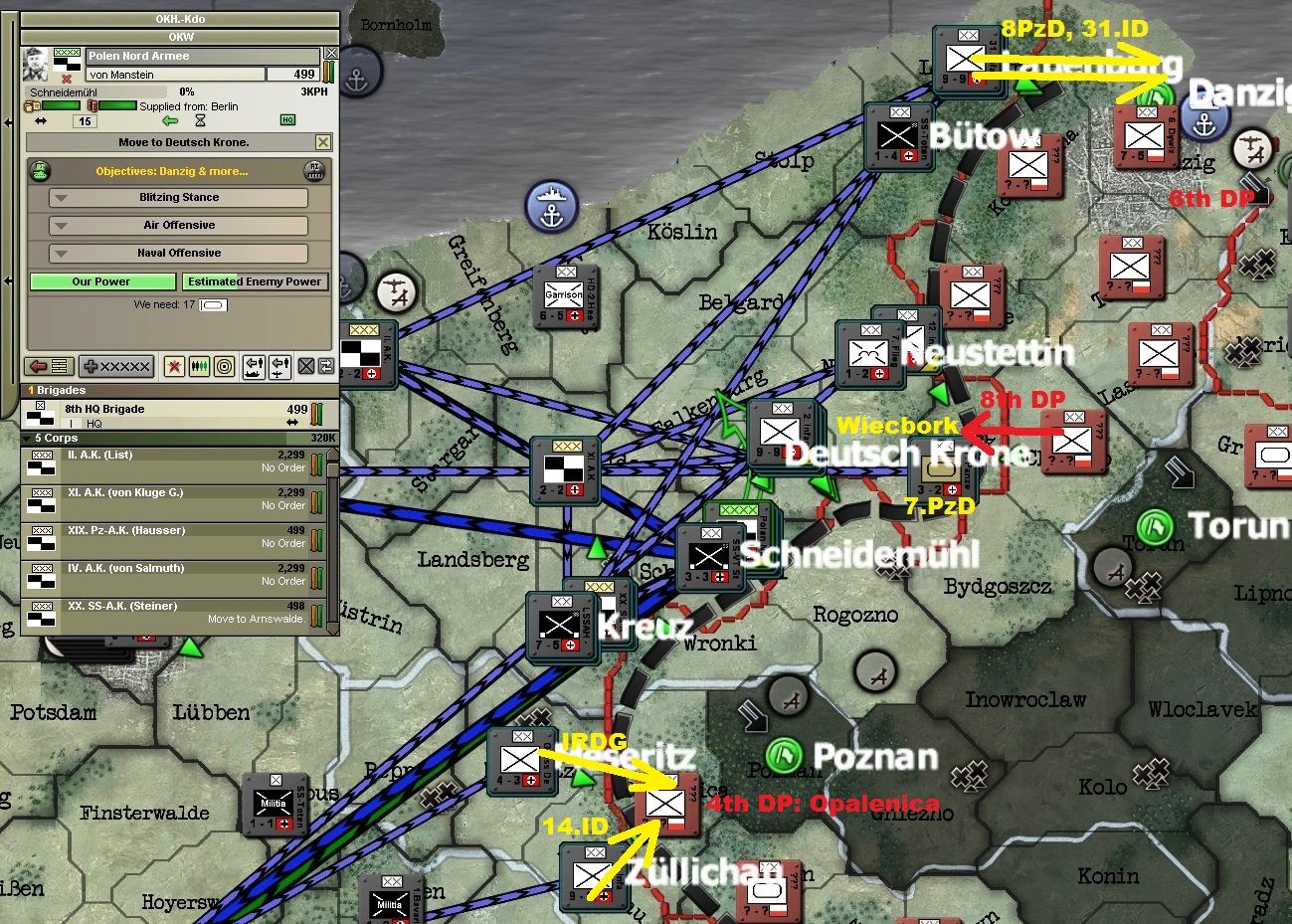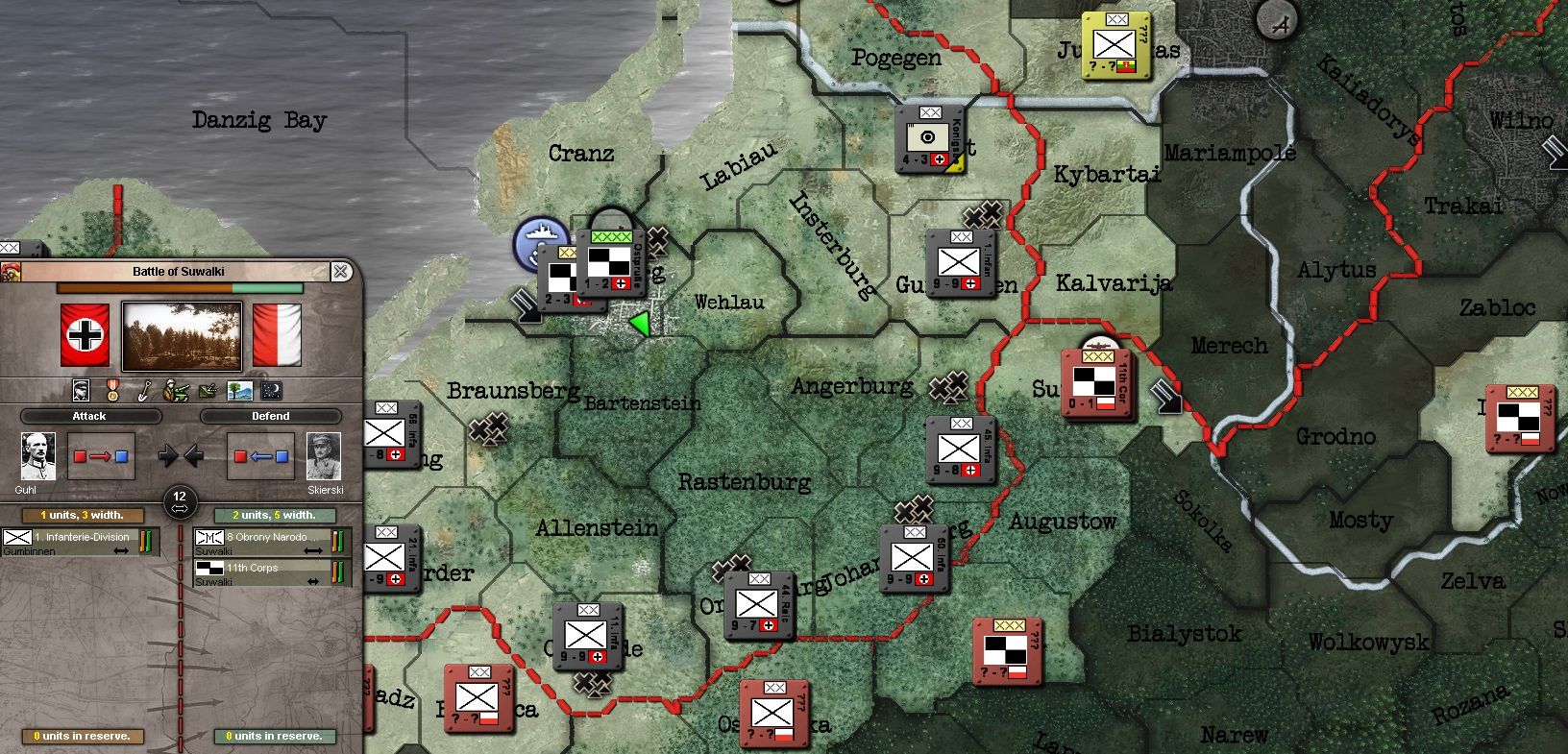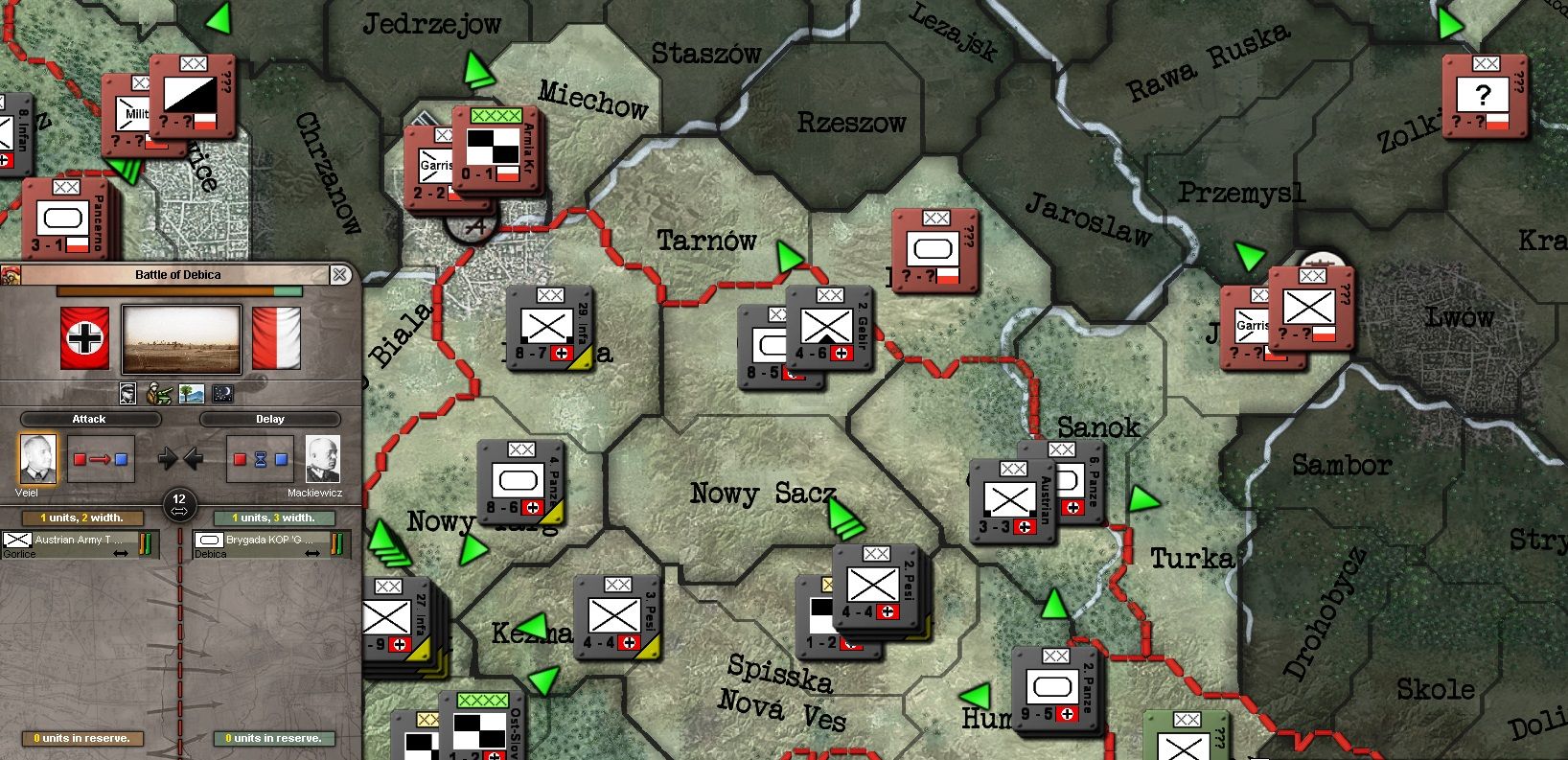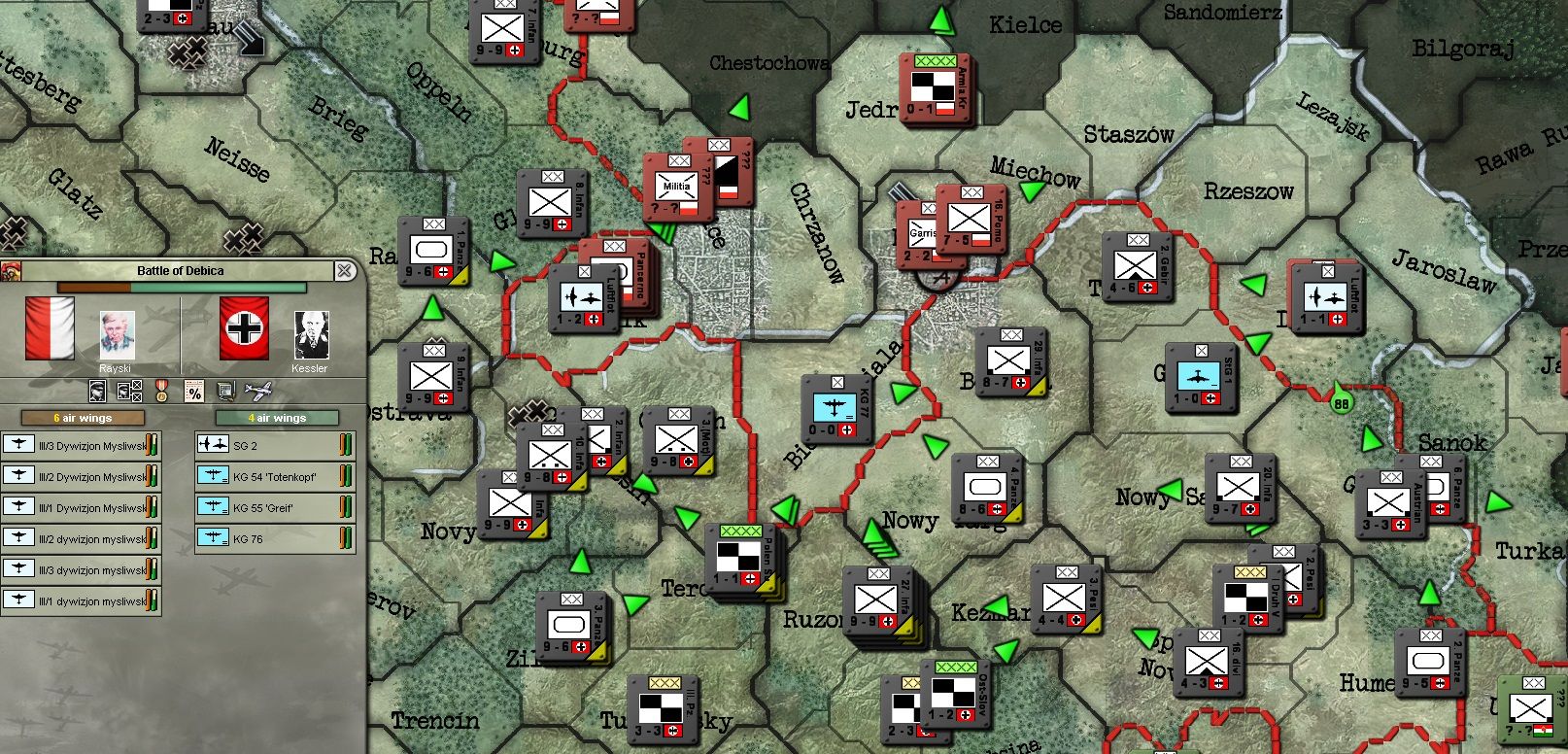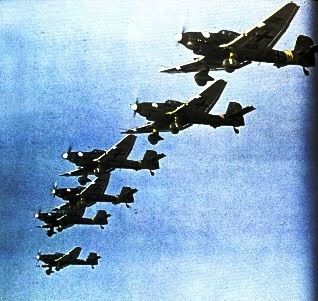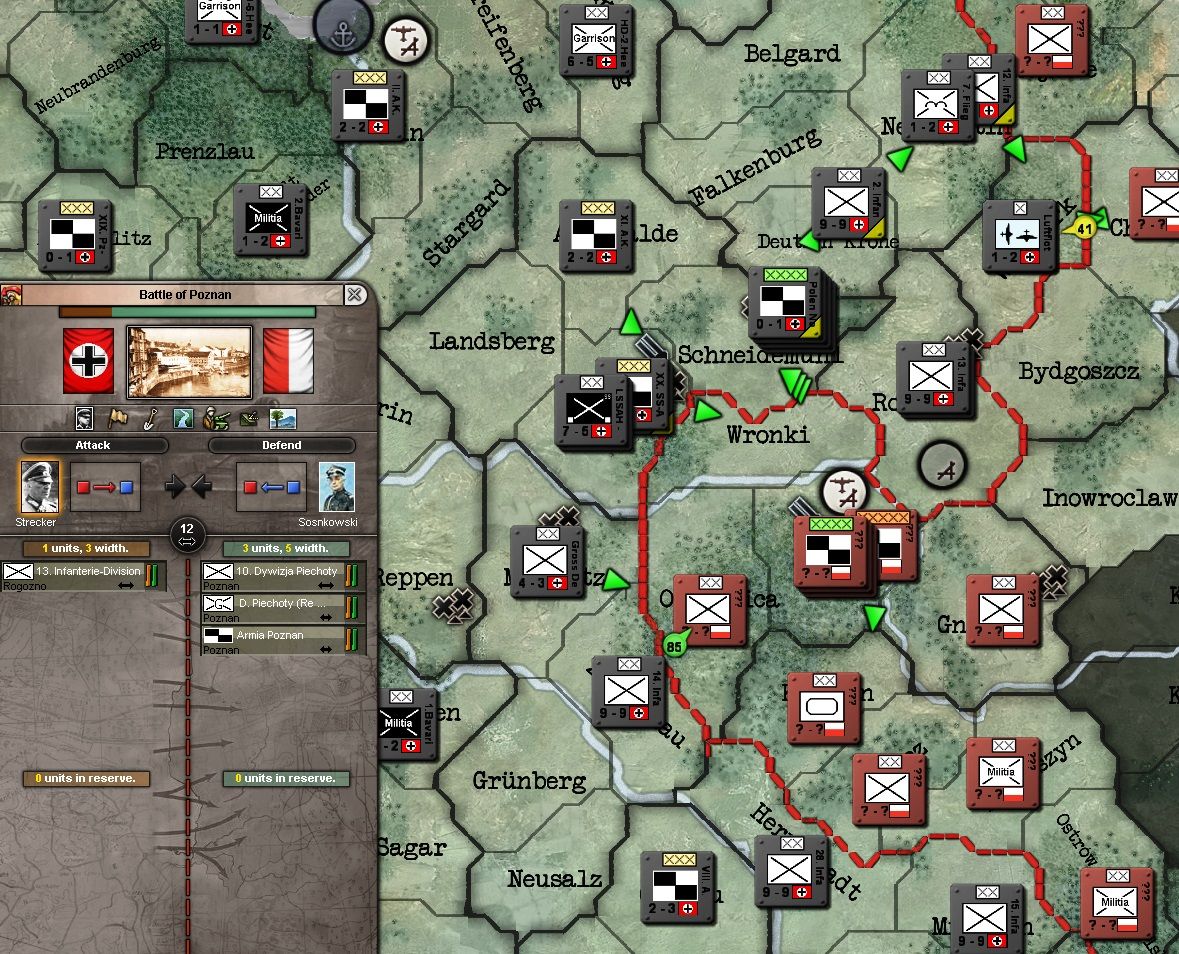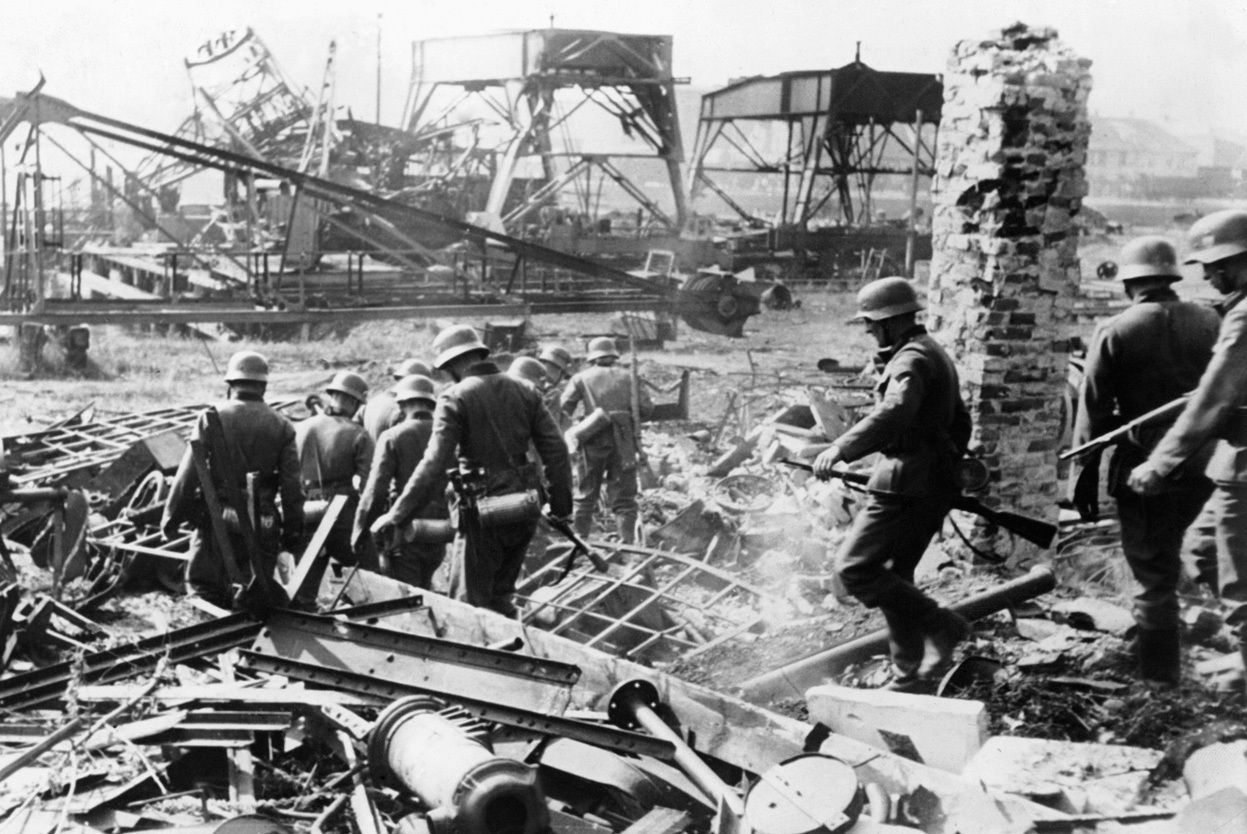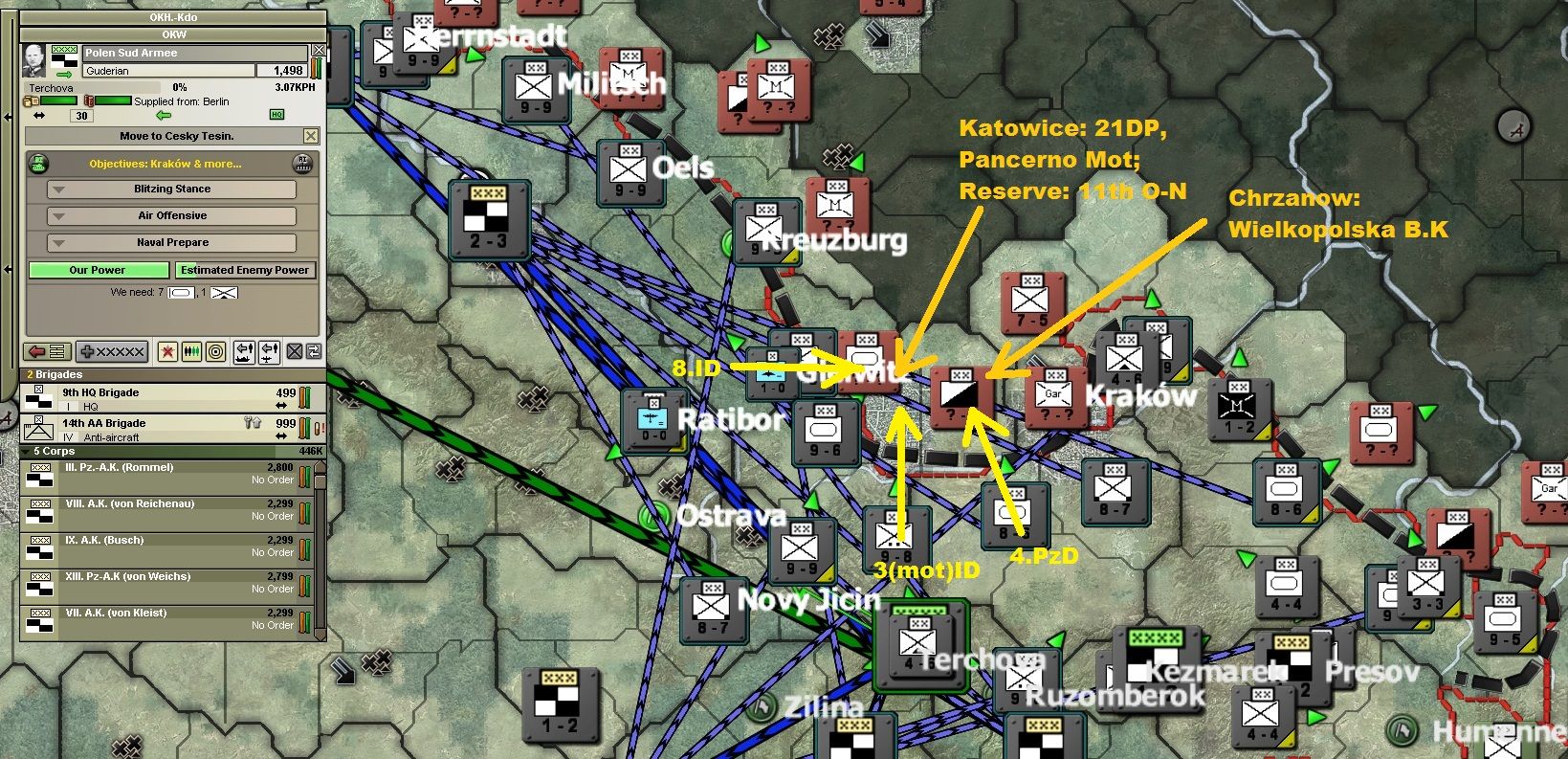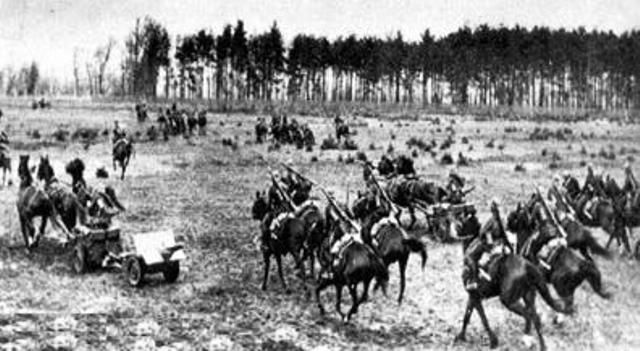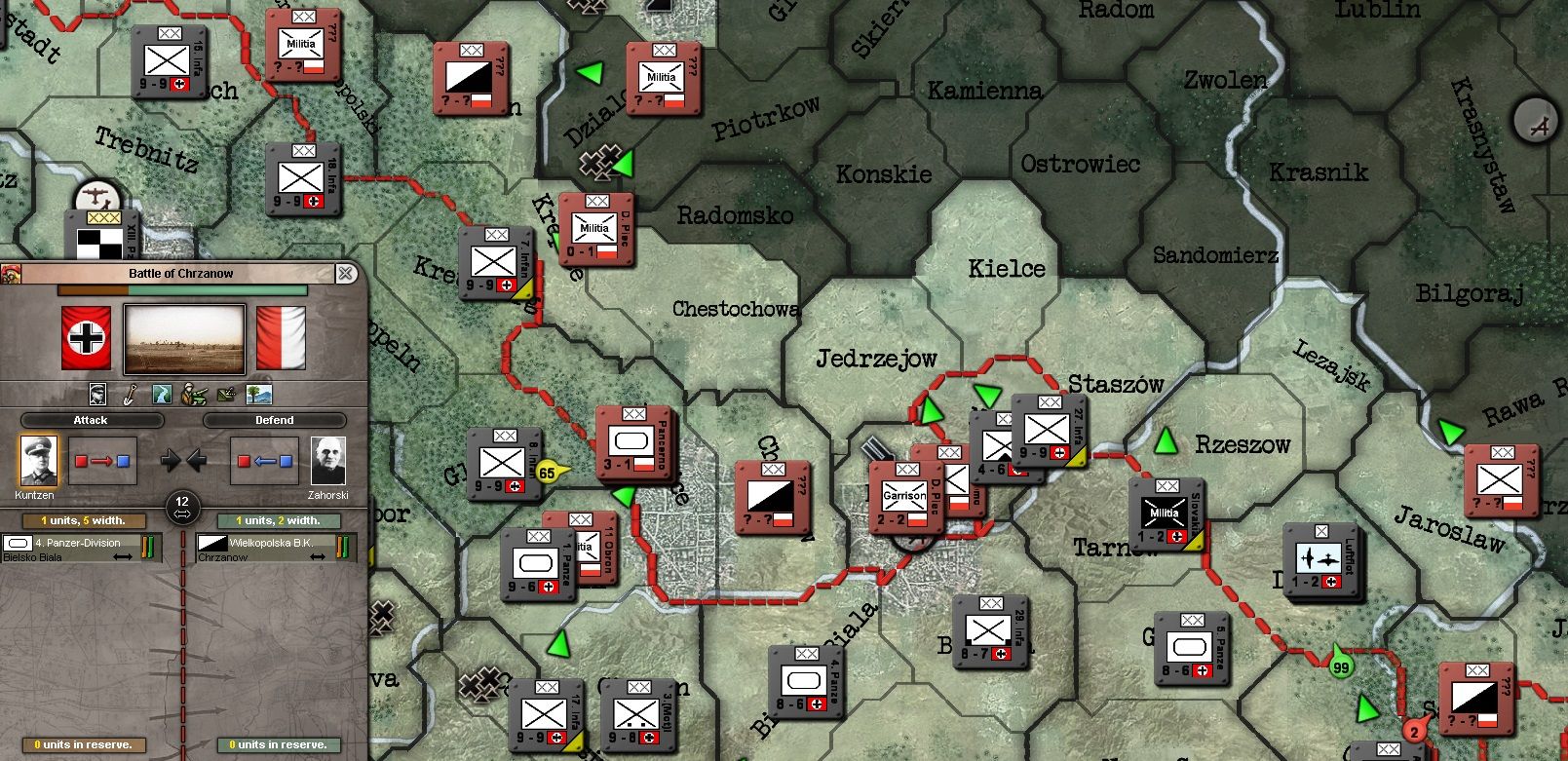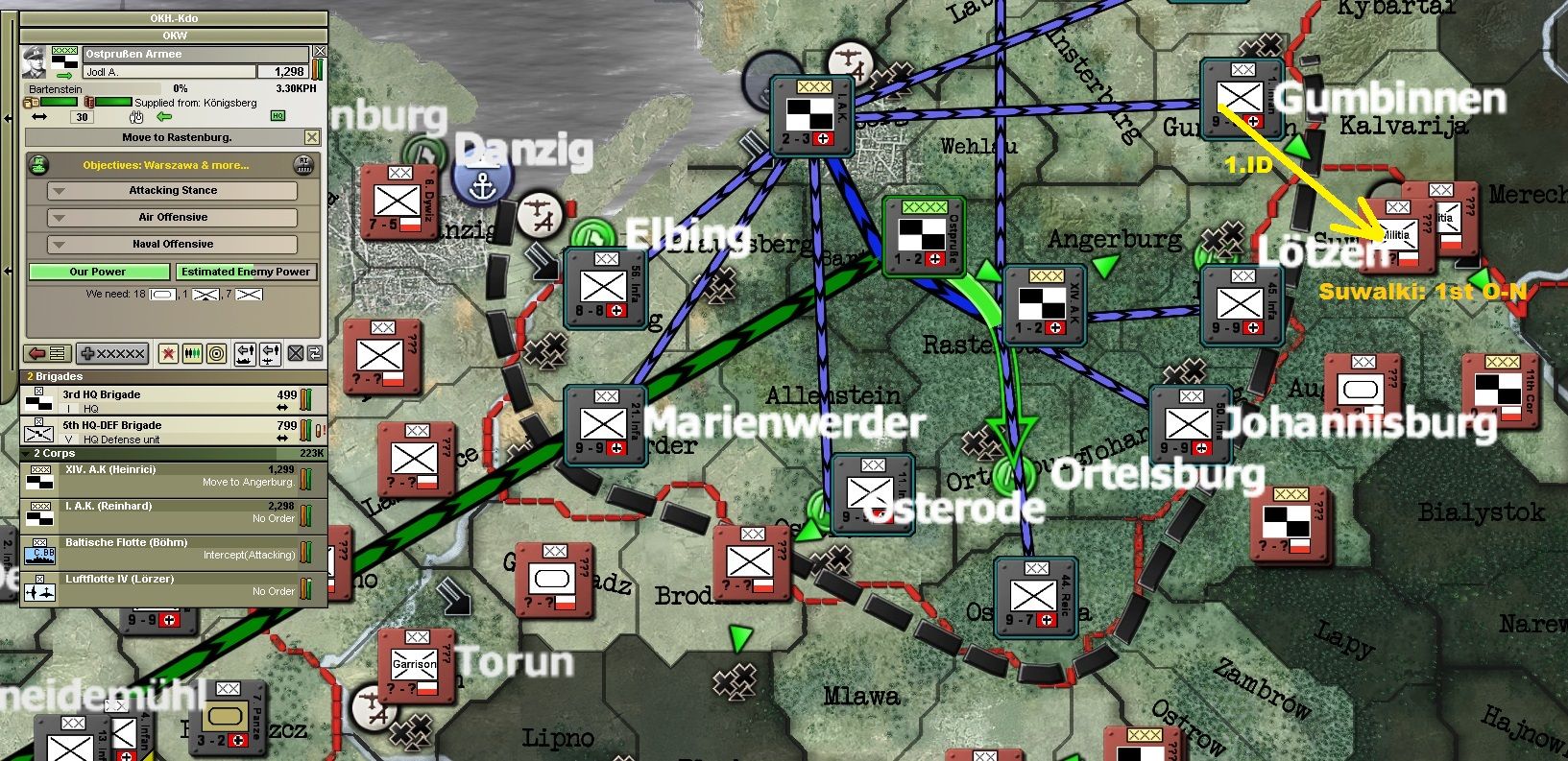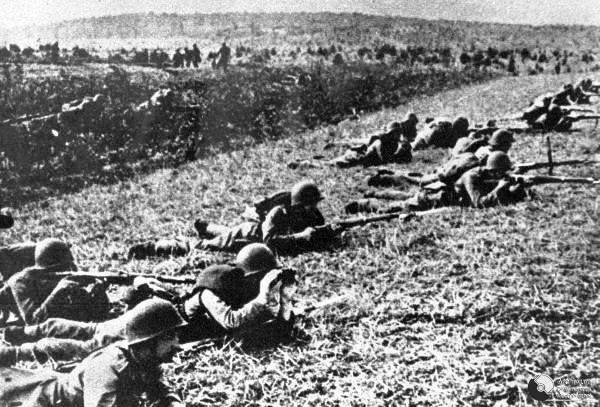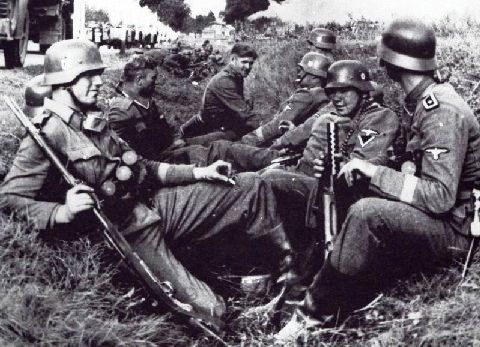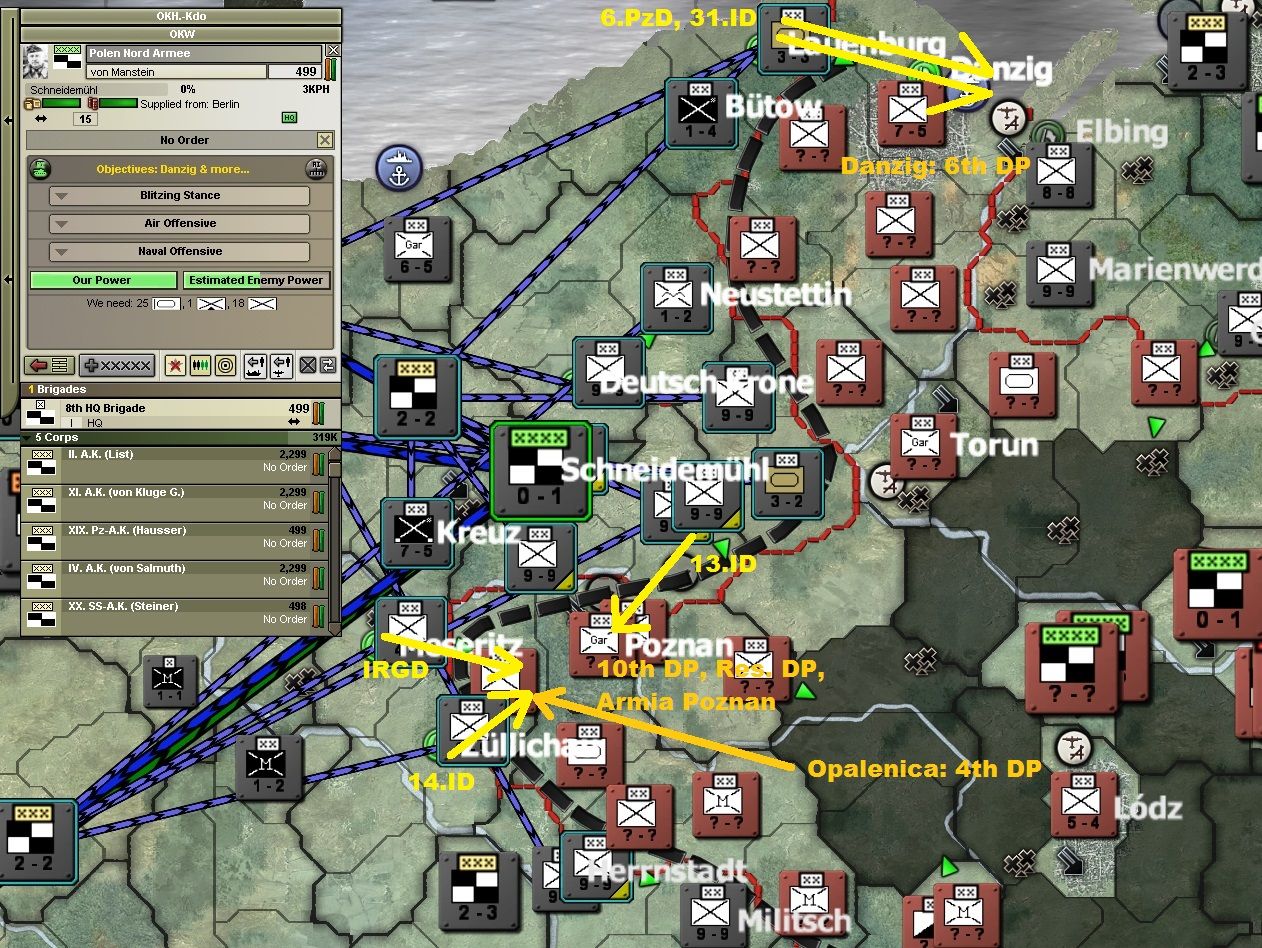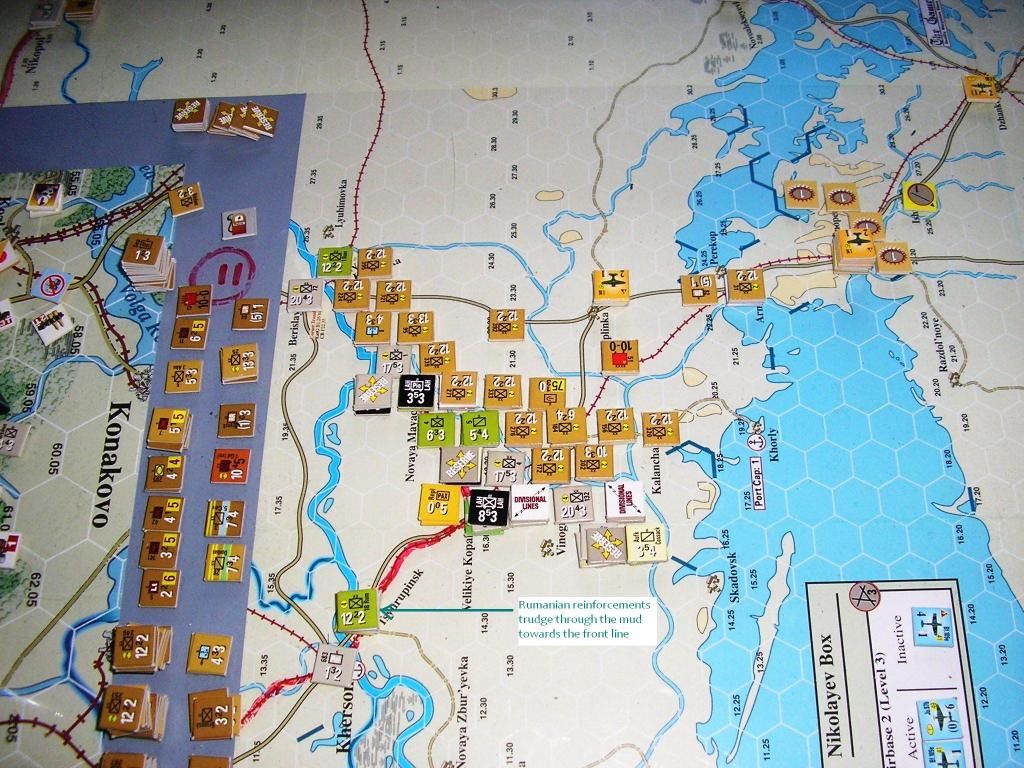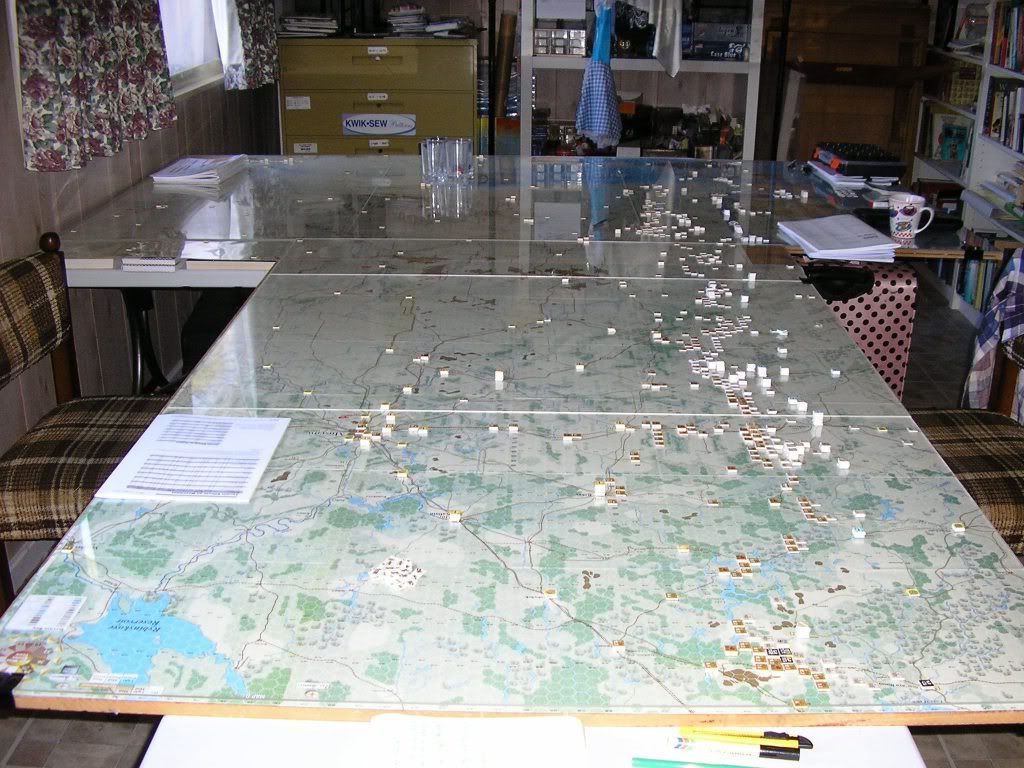Doppelgänger: the Untold Story of the Third Reich
Schoß Ortenburg is even busier than before – getting a parking spot anywhere near the building is impossible. A motorcyclist does manage to squeeze his machine into a narrow gap between an outhouse and the main structure and, clutching a small document case, runs into the building. He stands out among the others rushing in and out: he is in the uniform of the Waffen SS.
Finally the Ost-Slovak Army had a battle:
Debica. The honour fell to a group of assorted units assembled from the old Österreich Army, known to the administrative staff as “Austrian Army Troops”. With its infantry brigade fully motorised, it had been at the forefront of von Küchler’s advancing army, and on Friday 15th September it clashed with Mackiewicz’s Byrgada Korpusu Ochrony Pogranicza “Grodno”. (These “Border Protection Guards” must have been sent from the east). At least initially, the Poles seem intent on delaying General Veiel’s troops.
Battle of Debica: 1AM 1th September 1939
Within hours Kessler’s Luftflotte VII was over Debica, and it was joined later in the day by Schwartzkopff’s Stukas: why they were taken from their bombing of Danzig is a mystery. (Did General Eberhardt think that creating more rubble in the port city made his task harder?)
The Polish Air Force put a special effort to protect Debica. Kessler’s Heinkels were hit by about 600 fighters on his first bombing mission and the Poles were waiting over Miechow when he tried to reach Debica a second time. “Viper” did its best to protect the bombers, losing 34 Messerchmitts, but sheer weight of numbers saw the PZL P.11 break through. 60 bombers were lost before Kessler recalled his aircraft.
Schwartzkopff was also subject to attacks, losing 18 bombers, but was able to complete both missions on Saturday, though with little accuracy. On Saturday and Sunday he was back again, and this time was unhindered by enemy fighters. What tipped the balance, however, was the arrival on the 18th of Förster’s Luftflotte III, together with a flank attack from Grybow by 5th Panzer Division. With his men being slaughtered for no real purpose, Mackiewicz gave the order to retreat. Less than 7,000 survivors of Brygada KOP “Wilno” made for the safety of Jaroslaw.
Schwatzkopff’s Stukas fly over the attacking Austrian divsion
Luftflotte II was directed to bomb Chelmo, the base for 8th Dywizja Piechoty which was attacking into
Wiecbork. It possibly helped in defeating the Poles, who abandoned the attack at 3PM on Friday. At least, that is what Generalmajor Dessloch claimed: I think it far more likely it was the arrival of Haenicke’s 8.ID which had been slowly marching east.
General Sosukowski and his 26,000 men were a formidable foe, dug in the streets and buildings of
Poznan, but Strecker attacked across the Warta River anyway. Prospects are not good, with 13.ID making little headway. Air support did not arrive until 2AM the following day when Schlachtluftflotte V was able to make a couple of raids. On the 17th Dessloch joined in and the Poles took terrible punishment. As with Danzig, however, it seemed to not affect the resolve of those defenders who remained. (Though by nightfall on the 18th barely 6,000 men remained in the city.)
With Poznan under attack, von Manstein ordered General von Stülpnagl to take the adjoining province of
Gniezno. Even though the Poles had the benefit of some fortifications, 4.ID was able to defeat them before the end of the day. The Luftwaffe was not required, the attached artillery being sufficient to inflict heavy casualties.
Early on the 16th Polen Armee Sud entered
Katowice with barely a fight. Schubert’s forward scouts exchanged shots with the cavalry of Wielkopolska B.K. which then withdrew. Guderian’s headquarters was reluctant to claim that the Polish Army was crumbling, but it was evident that there was some hope this was the beginning of the collapse of the enemies will to fight.
It was lucky the “victory” was not celebrated too vigorously – by 10AM Schubert’s scouts reported encountering infantry, apparently a mountain division was dug in around the city. 8.ID was supported by 3 (mot)ID which approached from the south and the bombers were called in. Even with 4:1 superiority, Schubert could not make much progress, and by the end of the 18th there were positive sightings of armour amongst the bombed buildings. There is no longer any talk of “collapse”.
For every easy victory like Gniezno, there was a drawn out meatgrinder like
Opalenica. Förster and his Heinkels were again called upon, but Boltuc’s men simply absorbed the losses and kept fighting. Nevertheless, late on the 18th General Bremer advised IV Armeekorps that the end was in sight.
And of course the battle for
Danzig still continued. Eberhardt has asked for priority air support, and Lörzer’s Luftflotte IV was been assigned to hit Danzig. (Ostprußen Army has not yet mounted an attack on the city from the east, so lending its air asset is the least General Jodl could do). We estimate nearly 1,000 men were killed in the bombing, and General Eberhardt also claimed on the 18th that he will control the city within hours.
The bombing has made turned parts of Danzig to rubble: the Westerplatte
It was to Schniedermühl that I had sent Hauptmann Lehmann. I was interested to find out how Himmler’s Waffen SS performed and this would be the first real test of their abilities. Two SS divisions were to take part in the attack on
Wronski, held by 10th Dywizja Piechoty. This was a complex attack, with three korps providing troops, so I was not surprised to find that von Manstein had appointed a regular army officer (von Tippelskirsch from 32.ID, II.A-K) to command. I should have my report before I complete this journal entry.
Early on the 16th it was the turn of 7.ID to show a second-line militia unit what real troops can do. The battle began at 4AM as Hansen flung his men into
Krepice, hoping to shock the inexperienced and lightly armed defenders. His success was complete: under concerted accurate fire the Poles often did not even use their weapons. It was all over in hours, and not one man of Hansen’s division was lost. There was an appearance by Schwartzkopff’s Stukas, but they were not really needed.
Position map for Polen Armee Sud at end of 18th September 1939
Ost-Slovak Army had more action in
Miechow, though it was very brief. 2nd Gebirgsjäger Division (part of von Thoma’s XVIII Geb.A-K) lost two men to 16th Pomorska before all fighting stopped. Perhaps this gave General Süssmann a rush of blood – he ordered his men to continue into
Kraków. After losing 14 men, he quickly came to his senses.
Situation map for Ost-Slovak Armee at end of 18th September 1939
It may be decided later that General Neuling had a rush of blood as well, as he attacked the Suwalska B.K across the Vistula River.
Sanok is heavily forested and General Dreszer had his men hidden overlooking the river crossings and fords. 2nd Panzer Division “Dreizack” is persisting, but it has not been able to maintain a foothold on the far bank.
Soldiers of Suwalska B.K approach the trees along the river bank.
Only five hours after Neuling’s men began to cross the Vistula, General Kuntzen also sent his panzer division across the same river. He had the advantage that
Chrzanow is flat agricultural land, making it harder for Zahorski to conceal his cavalry and armoured cars. It is a critical province, between Katowice and Kraków, and Guderian is sure to push Kuntzen. So far Wielkopolska B.K has shown more fortitude than it did earlier in Katowice. It seems more likely that rather than fleeing from 8.ID the cavalry was being reassigned to defend the river line.
The final battle for the 18th began at 2PM, in the far north-east. It was another attempt by the Poles to block access to
Suwalki. This time it was 1 Obrony Narodowej that was given the task and 1.ID that showed General Karaszewicz-Tokarzewski that his men were not up to it. They lasted 9 hours before conceding defeat.
Situation map for Ostprußen Armee at end of 18th September 1939
Waiting to hear from Hauptmann Lehmann I had time to review the news from Berlin that had built up for the past few days. Dusseldorf had been bombed by the RAF again, with more manufacturing capacity damaged. Von Arnauld de la Periere is singlehandedly running our sea war, sinking three convoys northwest of Portugal.
Politically nothing interesting, though Denmark has mobilised.
Late at night a dishevelled motorcyclist arrived at Schloß Ortenburg. His uniform showed him to be from the Kradschützen battalion of
“Deutschland” division. After I had shown him the identity documents I was currently using, he handed over a small package. He then asked me to “Make sure he knows”, saluted smartly, wheeled his machine around and immediately took off northwest.
Still wondering what he meant, I opened the package. From the date and time on the front page of the report, that soldier must have driven non-stop from Wronki! 500 kilometres here, and now heading back. A feeling of apprehension was starting to creep over me. What has Happtmann Lehmann been up to?
“As ordered, I set off from Ziilino to Scheidermühl in order to report on the performance in combat conditions of the “Deutschland” and “Der Führer” SS Verfügungstruppe divisions. I had some initial trouble as there was no direct traffic between the two provinces. You had ordered me not to draw attention to myself by attempting to obtain a seat on an aircraft, so I had only one option. I am certain that when the staff car is located there will be no way of connecting its theft to me.
The 340 kilometres turned into more than 400 as I could not risk going through check points, even if they were only traffic control. So it was late on the 15th by the time I reached my objective.
Obviously I could not pass myself off as an SS officer. (I thought of borrowing a uniform, but most of the Waffen SS seem to know each other quite well). However with control of the pending battle given to General von Tippelskirsch, I was able to convince anyone who asked that I had been sent by 32.ID headquarters to liaise.
I have to say that the troops themselves are generally good material. All have been recruited directly into combat units: none of the fascist militia here. They are fit and keen as would be expected from a volunteer force. Some units, howver, are lacking in both training and equipment. From what I heard, the Kradschützen Abteilung and the motorised artillery of “Der Führer” were basically straight from initial training: base grade troops not even good for garrison duty.
In a tough battle this may have been disastrous, but the Battle of Wronki was a walk-over. It began and ended according to plan. The area is flat ground, nowhere for the Poles to make a stand and plenty of opportunity for our troops to move freely. Perfect for the fully motorised SS divisions.
Unprotected on the open ground, the Poles waited for the attack
At exactly 2AM the signals were given and 19.ID attacked from the west while 32.ID and the two SS divisions attacked from the north. (As directed, I took no part in the combat, myself. I feel that I could have provided more detail had I been in one of the Kradschützen units – I am sure riding a motorcycle is not much different from a bicycle.) The single Polish division had no chance to stabilise as 72,000 men hit it from two directions. At daylight the Stukas arrived to remove the few road blocks and small groups holding out. By then the outcome was clear, though it was 2PM when the last fighting was ended.
Resting after their first action: Waffen SS soldiers
I had more trouble getting this message to you, but as I said, some of these SS are really green. It only took a slight hint that I was sending a report “to the top” for him to agree to deliver this to München. He thinks you are one of Himmler’s flunkies, so he should make good time.
I await your further orders.”
What am I to do with this man? He steals a car and then impersonates a member of Himmler’s secret police! And thinks this is being discreet! I think we both need to return to Berlin where I can keep a closer eye on him. At least I can finish my diary entry now.
Situation map for Polen Armee Nord at end of 18th September 1939
The motorcyclist is already many kilometres away from Schoß Ortenburg when the documents he delivered are locked in a secure reinforced valise. The valise is placed with a pile of cases waiting to be taken to the München Hauptbahnhof. With labels indicating they are high priority for delivery to the Reichskanzlei, it is not likely they would go missing, but the presence of an armed guard made such an event highly improbable. Their owner clearly feels his belongings are safe: he is fast asleep several floors above.
Code:
[B]Finalised Battles for the period 15th to 18th September 1939[/B]
Wiecbork 147 (33,970) 83 (18,731)
Gniezno 35 (26,978) 118 (18,484)
Katowice 0 (26,978) 2 (11,281)
Krepice 0 (26,973) 277 (15,162)
Debica 55 (31,371) 1,381 (9,222)
Miechow 2 (9,990) 5 (19,103)
Kraków 14 (9,998) 3 (26,002)
Suwalki 0 (26,975) 58 (21,354)
Wronki 30 (75,736) 836 (19,139)
Total [B]283[/B] [B]2,763[/B]
[B]Bombing Summary[/B]
[B]Luftwaffe[/B]
Danzig Schlachtluftflotte I 117, 207, 52 (376)
Chelmo Luftflotte II 136, 121 (257)
Debica Luftflotte III,VII,Schlachtluftflotte I 119, Abort, 37, 42, 120, 101, 26, 177, 199 (821)
Poznan Schlachtluftflotte V, Luftflotte II 40, 29, 35, 303, 112, 73, 275, 104 (971)
Opalenica Luftflotte III 30, 146, 72 (248)
Danzig Luftflotte IV 150, 154, 32, 129, 99, 30, 160, 118(872)
Katowice Luftflotte III 71, 148, 34, 23, 21 (297)
Krepice Schlachtluftflotte I 66
Wronki Schlachtluftflotte V 128, 32 (160)
Total [B]4,068[/B]
[B]Polish Front (15th to 18th September 1939[/B])
German Ground Losses 283
Polish Ground Losses 2,763
German Bombing Losses Nil
Polish Bombing Losses 4,068
German total losses [B]283[/B]
Polish total losses [B]6,831[/B]
[B]Total Cumulative Casualties[/B]
German Ground Losses 236 + 283 = 519
German Bombing Losses 271 + Nil = 271
Total German Losses 507 + 283 = [B] 790[/B]
Polish Ground Losses 2,478 + 2,763 = 5,241
Polish Bombing Losses 4,071 + 4,068 = 8,139
Total Polish Losses 6,549 + 6,831= [B]13,380[/B]
[B]Battle of the Atlantic[/B]
Prior Total
U-boat losses Nil Nil Nil
Convoy losses French 2 2 4
British 1 1 2


